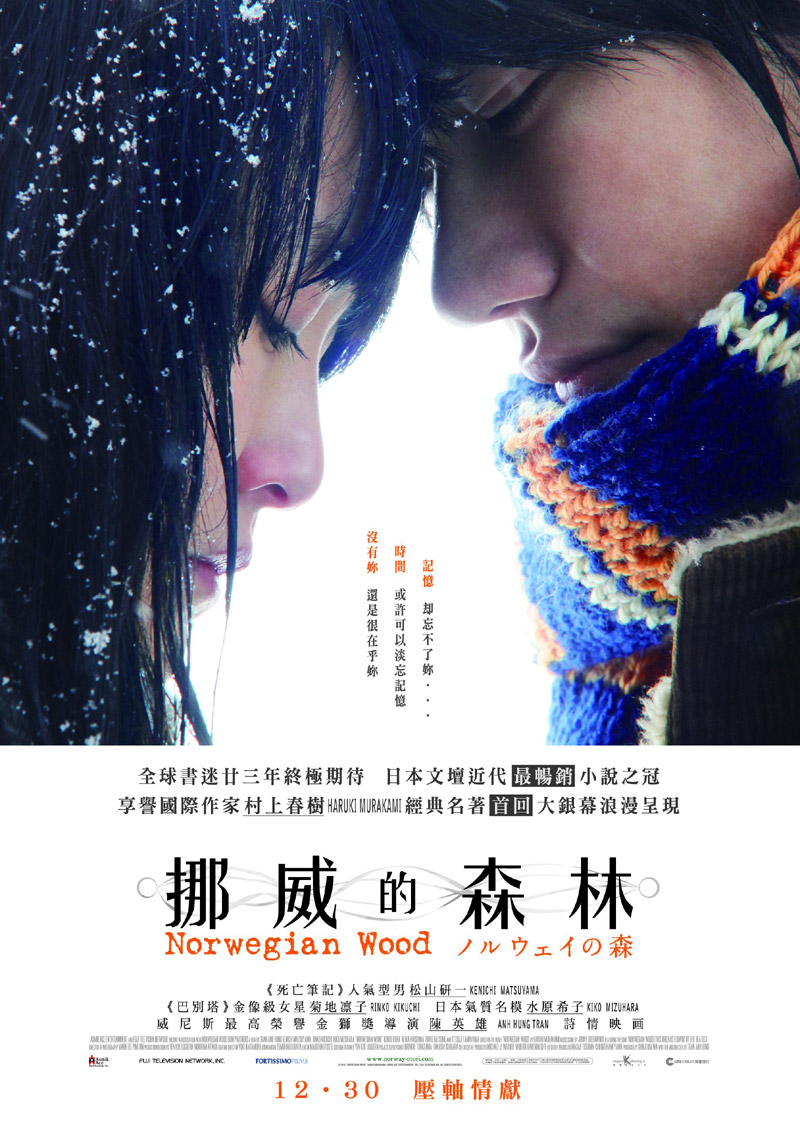The first difference that stood out to me between the book and film adaptation of Norwegian Wood was the portrayal of the characters, both in their appearances and their behaviors.
Visually Naoko’s character appeared very much how I imagined her, but Reiko and Midori were a bit different than I imagined them. Both of these characters’ hairstyles in particular were described as much shorter in the novel, which may not seem like a significant difference, but I felt it was an important detail that contributed to both characters’ personalities. I remember in the novel there being vivid descriptions of Midori’s skirts being really short, like inappropriately short, and in the film they looked normal. I think these small changes were significant because it changes the way the viewer perceives these characters, especially Midori. I think that the minimization of Midori’s indelicate dress and mannerisms really takes away from her character in the film, and makes scenes like the one where she asks Watanabe to take her to a porno seem out of place. Last note on appearances, I remember Watanabe being described as not the most handsome man ever but he was definitely very attractive in the film, although I do not think this difference had as significant an impact on the perception of his character as the other characters mentioned.
I also thought many of the characters’ delivery of speech was much different than I pictured. In terms of Naoko, I imagined her speech as much more reserved and somber, everything she says infused with the deep and profound sadness she carries with her. Contrastingly, in the beginning of the film she is shown smiling and seemed more cheerful in her early scenes conversing with Watanabe. Also, in the novel there were plentiful descriptions of Naoko uncontrollably sobbing, and these scenes felt very subdued in the film. I do not think the film did the best job portraying these overpowering feelings of grief and sadness, that ultimately led to Naoko’s suicide. Additionally I pictured Midori and Reiko’s tones both as much more blunt and feisty, whereas in the movie they felt much more reserved. Much of Midori’s dialogue was the same in the film as in the novel, but they felt a little out of place with this toned down version of her character. Reiko’s portrayal in the film made her appear as almost a normal person, whereas in the novel I pictured her as much more eccentric, especially with her flirtatious comments towards Watanabe.
The next difference that really stood out to me was the scene where Midori and Watanabe share their first kiss while watching buildings burn from Midori’s balcony. In this scene in the film, fire is changed to rain, which really stood out to me. While I think rain contributes to the overall somber mood of the story, I think that the fires from that scene were very representative of Midori’s character, and help the reader interpret Midori’s role in the story. I think the fire in that scene is significant in developing both Midori’s individual character as well was contrasting her, and her relationship with Watanabe, to Naoko.
Another difference I noted about the film was the omission and shortening of many scenes, significantly the exclusion of Reiko’s backstory. I think Reiko’s backstory was very important to understanding her character and her relationship with both Naoko and Watanabe. I also feel that the movie downplayed Reiko’s role significantly. In the book I saw Reiko as a very important character, as she often acted as in intermediary between Naoko and Watanabe, and I think her role in the film was severely diminished. I felt like the film offered an abridged version of the story. It was still able to present most of the key scenes, but they felt a bit rushed, and missed a lot of the subtle details of conversations that were what made the novel so captivating. Overall I feel that the movie did shorten and remove many scenes that were important to the novel, but I still think they adapted the novel in the best way possible, and were still able to present an authentic telling of the story without changing major details. While watching the film it reminded me of the film adaptation of Kazuo Ishiguro’s Never Let Me Go. In that adaptation I felt that the film significantly changed many details of the novel, and replaced many conversations between the characters, which similarly to Norwegian Wood drive the story, with more plot relevant scenes. Overall I think the film did a good job of preserving the essence of the story and it’s portrayals of interpersonal communication and created a successful adaptation of the novel.
Ken
